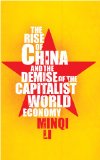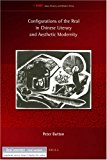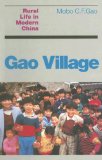Current Condition of China’s Working Class
China’s working class has played an essential role in the economic development and social advancement that have taken place since the reforms initiated in 1978. Workers now are responsible for the creation of 72.1% of China’s GDP.
In 1978, there were 120 million workers in China. By 2000, there were 270 million. Adding the 70 million peasants that have moved to the cities and found long-term wage work, China’s working class now numbers approximately 350 million, accounting for half of China’s working population.
The cultural, scientific and technical level of the working class has improved, and the living standard of most of the working class has also risen.
The working class - especially industrial workers - have experienced great changed since the reforms began more than 20 years ago.
I. Wage-laborization
There are currently more than 100 million workers now employed in the non-state sectors. The 13th Party Congress established that workers laboring in private enterprises are wage laborers.
What about the SOEs? SOEs have undergone two types of reforms: the small have been sold-off and the large have been transformed into joint-stock corporations. A portion of small and medium-sized SOEs have been sold to private owners, and transformed into private enterprises, while another portion have transferred ownership of a significant portion of enterprise shares to the management. On August 7, 2002, the Zhejiang Daily News published a news story written by a Xinhua reporter entitled, “‘The New Tycoons’ Take Jiangnan by Storm.” The story included a survey of survey of restructured small and medium-sized SOEs, and stated that local governments and enterprises are more and more inclined to view transferring a majority of shares to the management as an effective restructuring strategy. The article shows how many enterprise managers have ¡®overnight’ come to hold shares worth 10s of millions of yuan through various means, forming a new group of tycoons. These managers have used all their resources at their disposal and overcome difficulties in raising capital. Some borrow money from their friends, others take out a mortgage at a bank, and others use their own cash. In addition, some local governments loan the managers money from their own revenue, and some governments reward managers with ¡®technology’ or ¡®management’ contribution shares, meaning that managers can come to control shares without even spending any money. Some managers purchase shares with workers, and then use the enterprise’s wage fund to purchase more shares. When large SOEs were restructured into joint-stock corporations, foreign and private firms bought shares, and it was stressed that the managers were the representatives of the state shares, and were given significant portions of the shares and a yearly salary. This salary was 10 times, sometimes 100 times what an average worker in that enterprise made. Workers within joint-stock corporations are now wage-laborers.
II. Pauperization
Compared to private enterprise owners, foreign investors, own-account workers, and the intellectuals who serve the above-mentioned groups, improvements to the living standard of the working-class in China has been limited in scope, and poverty relative to other groups has increased.
Statistics show that the number of private firms grew to 2,028,500 by 2001, from none in 1978. The firms have a total of 1.8 trillion yuan in registered capital, with 23,000 firms having more than 10 million each, and 383 having more than 100 million yuan in registered capital. 22.53 million workers worked in private firms in 2001. Unpaid labor is a major source of the capital accumulated by private and foreign firms.
The “Report on Problems in Education and Human Resources in China” recently issued reports that the average yearly labor cost of a manufacturing worker in China from 1995-1999 was USD729, 1/40 of the cost of a worker in the US, 1/13 in Japan, 1/5 in South Korea, and significantly lower than India. Other statistics show that the average manufacturing wage in China is under 0.60USD/hour. One of the main reasons that private firms are able to develop and foreign firms are interested in investing in China is the low labor costs.
Workers have become poorer in relative terms, and working conditions are also poor. Some private enterprises have working days longer than 10 hours, low wages, pay wages late or do not pay them, have poor safety records, place restrictions on workers’ freedoms or humiliate them, and frequently experience workplace injuries or deaths. It is also worth noting that many enterprises that hire peasants have truly atrocious living and working conditions. In the words of the peasant workers themselves, “We get up earlier than the chickens, work harder than bulls, and eat worse than pigs.”
Some members of China’s working-class live in absolute poverty. This usually happens as a result of two different types of situation. First, the worker is unemployed and his/her only source of income is the government’s guaranteed minimum income. The second is that the worker’s income exceeds the minimum standard, but because of familial obligations, such as an illness in the family or a disaster, his/her living standards fall below the poverty line. It is uncertain how many workers fall into this category. 20.53 million workers now receive guaranteed minimum income supplements from the government, and many that should receive them are not covered. It is difficult for these workers to maintain three meals a day, send their children to school, get medical care, and pay for rent. Often workers sell their blood or commit suicide as a way out.
The rising poverty of workers over the past few years has been led by an increase in unemployment. Since 1998, 27 million workers have been let go from SOEs, while other workers are nominally still employed while production has been significantly reduced or cut altogether. Other enterprises have devised schemes of ‘internal retirement,’ canceling labor contracts, or buying out workers’ pensions. The number of unemployed workers who are able to find work after becoming unemployed is falling.
The policy of the past few years of cutting staff to increase efficiency is worth reconsidering. How can there be efficiency when workers are laid-off and do not work? Efficiency in this sense only refers to the labor productivity of the workers who are employed, obtained often at the expense of wages and welfare. But unemployed workers still have to live and need to be re-employed, and social stability must be maintained. This requires investment, and greatly increases the burden of the government and society. If efficiency is to be increased, the workers must shift to other employment, not give it up. Is this possible? Some enterprises have tried it over the past few years, and have proved that it is possible. A forestry department in Heilongjiang Province had cut down all the local forests, and sent the workers to plant trees instead of cutting them down. The locality also used its water and pasture resources to develop agriculture and animal husbandry, as well as construction and industrial production, providing employment to nearly all the unemployed workers. On March 24, the Renmin Ribao reported a story regarding the Furun Industrial Group from Zhejiang Province that had merged with over 20 companies of the last 10 years, resulting in the unemployment over 9000 workers. The group’s CEO said, “Our goal is to increase the efficiency in the companies we buy out, however reducing the number of employees is not the only method to achieve this goal. We depend on the workers for successful corporation. If we get the company going, the workers will have something to depend on.”
There are three conditions for a socialist market economy: 1) that the system of state ownership remains primary; 2) that remuneration according to labor is primary; 3) state macro control of the economy. But another condition should be added: those of the ability to work should be given employment. The slogan ’smash the iron rice bowl’ is improper, and has generated serious negative consequences. As long as we continue on a socialist path, we cannot, like capitalism, create a large reserve army of labor. The state must protect the realization of its citizen’s labor rights.
III. The erosion of rights
Workers are now referred to in China as, ‘economically disadvantaged’ in terms of their economic strength, and a ‘disadvantaged group’ in terms of their political and social strength.
Workers are always conscious of the level of their participation in the management of the industries they work in. in the past, although the workers’ representative council was mainly only a formal body, it did have its uses. Now, these councils have become even more formal, and many of them no longer meet. Workers are particularly excluded from discussions on important issues including corporate restructuring and decisions to sever workers’ connections from their work unit.
During the 10th NPC Conference, workers’ and peasants’ representatives accounted for 511 of the 2984 total representatives, or 18.46% of the total. Some say that workers and peasants do not have the ability to conduct legislative affairs, and so workers and peasant should not be chosen as representatives. Currently the party in government regularly poll consultant meetings, conferences, informal meetings, etc., however workers’ representatives are conspicuously absent.
The media also rarely reports about workers issues, except when it discusses unemployment. Workers’ contribution to economic development and social progress is also rarely mentioned.
The China Academy of Social Sciences recently produced a report entitled, “Research Report on Contemporary Social Classes in China.” The information below is taken from the report, and shows the relative numbers of workers and entrepreneurs in the Communist Party:
|
Zhenning County, Guizhou
|
Hanchuan, Hubei
|
Hefei
|
Shenzhen
|
|
|
Private Entrepenures, % Party members
|
0
|
9.1
|
24.4
|
22.2
|
|
Workers, % Party members
|
10.3
|
5.9
|
13.3
|
0
|
|
Unemployed, % Party members
|
3.9
|
1.8
|
9.1
|
2.0
|
The “Research Report on Contemporary Social Classes in China” shows that the number of entrepreneurs in the party is clearly increasing. In 1993, entrepreneurs and managers made up 13.1% of party membership, rising to 17.1% in 1995, and then 19.8% by the year 2000. This gives us good evidence that the political stature of entrepreneurs and managers is rising, and that of industrial workers and the party is sharply falling. There are few links between workers and the party organization now, and workers rarely participate in more concerned about party activities or party propaganda. This clearly shows that workers’ political stature is falling and their links with the party are becoming more strained.
IV. Fragmentation
The working-class is the most organized and disciplined group in society, having developed from the emergence of the socialization of production. Workers in China are traditionally organized along factory lines. Currently, the relationship between workers and the enterprises is a labor contract. Compared to employers, workers are always in a weaker and more dependent position. Today, referring to workers as, “the masters of the enterprise” elicits annoyance more than anything else. When the labor contract is up, workers are forced to look for other employment, and have little else to depend on other than themselves. Unemployed workers often end up setting up small shops or working part time.
In the past enterprises in China were both economic organizations as well as social, political, and party organizations. A closely that workers together with other strata and sectors of society. Today in China, only the economic aspect of enterprises is highlighted, and once and employees links with the enterprise are broken when his or her labor contract expires or as terminated, workers are no longer part of any organization and have no one to depend on. When the labor contracts of the workers in Daqing were terminated, the workers’ links with the Party was also terminated.
Of China’s 350 million workers, only 130 million are union members. Many workers in private and collective enterprises are not union members, and most migrant workers do not have unions.
Because there is little socialist or collective education among workers in China, bourgeois individualism is seriously eroding the working-class.
In cases were workers collectively organize to uphold their own rights, this is usually done by spurning the Party and the union organization, and organizing themselves. We must be wary of US and other Western powers attempts to support so-called “workers’ rights organizations” in order to bolster forces opposed to the Party and government.
During the last 20 years of the reforms, worker’s economic and political standing gradually been eroded. Social contradictions heavy humidity during this period.
In order to fundamentally alter the current plight of workers, we propose:
1. We reaffirm the guiding progamme of ¡®fully depending on the working class.’ This touches on the nature of the Party, the nation, society, and the smooth implementation of socialist modernization. This is the basic guiding programme of our Party. We should carry out the programme included in the report of the 16th Party Congress and the Party Constitution to: “strengthen the Party’s class base and expand its mass base,” and to: “keep public ownership as the mainstay of the economy and allow diverse forms of ownership to develop side by side, while also maintaining remuneration based as labor as the mainstay and allowing diverse forms of remuneration.”
2. Based on research and opinions of the Political Bureau of the Central Committee, we should discuss and implement the policy of ‘fully depending on the working class.’ This should be fully realized in political and economic reforms.
3. We must give China’s unions a backbone. We must understand how to organize the working masses in unions within China’s socialist market economy, and particular attention should be given to private sector workers and migrant workers. We must learn how to truly represent the working class masses, and staunchly uphold the legal rights of workers. We must be comprehensive and historical in our research and investigations, and produce practical and guiding resolutions. We must transform the Party’s leadership of unions, and allow for union workers to reflect their true conditions and engage in legal and proper struggle.
4. The Party’s propaganda apparatus should maintain a historical-materialist outlook, and publicize the huge contributions that workers, peasants and intellectuals have made towards China’s revolution and construction, and also publicize the contribution and meaning of the creative labor of workers, peasants and intellectuals in China’s realization of socialist modernization. The Party should criticize those who discount labor and the laboring classes, clearly protect the legal rights of worker, and expose and denounce actions and words that harm working class interests.
Related posts:




Leave your response!